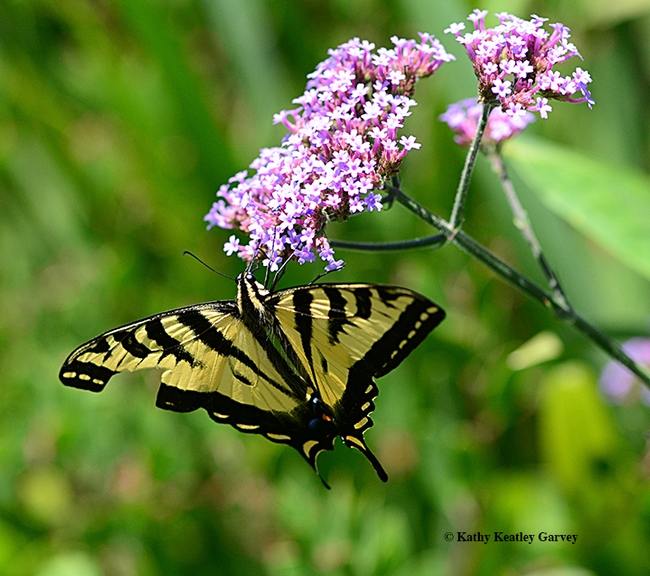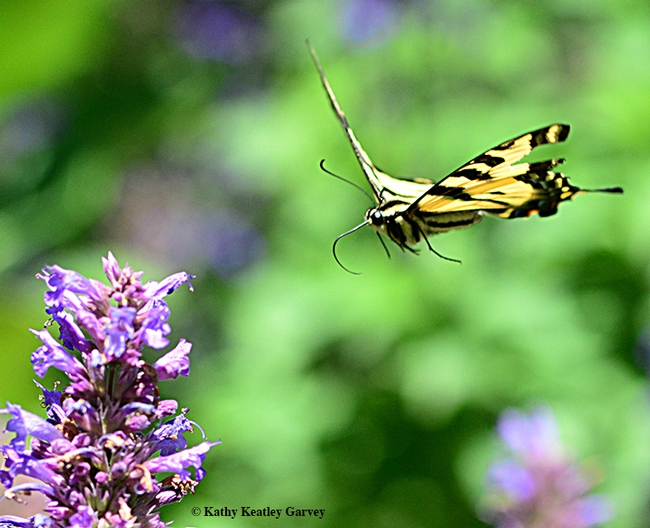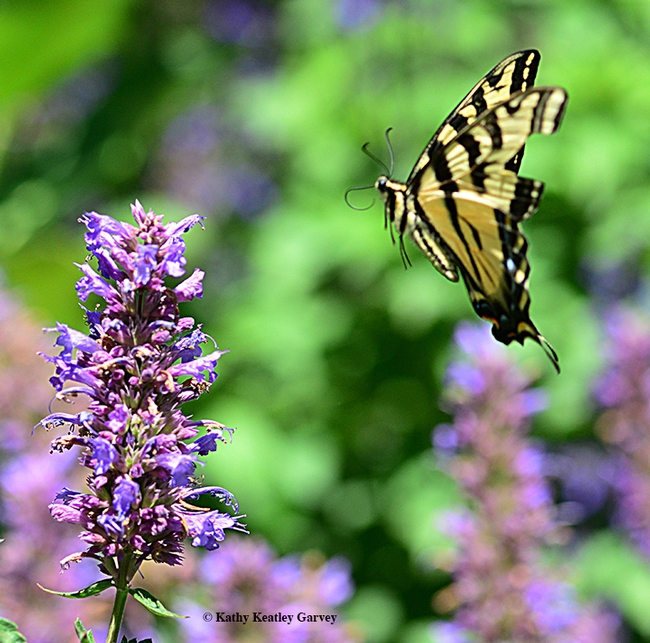If you visit the Kate Frey Pollinator Garden at Sonoma Cornerstone--and you should, especially during National Pollinator Week--you'll see honey bees, bumble bees, butterflies and hummingbirds, among other pollinators.
Today we spotted a male monarch patrolling the milkweed in search of a female, and a Western tiger swallowtail nectaring alternately on Verbena and on Salvia 'indigo spires.'
About that Western tiger swallowtail--it was missing a chunk of its left forewing. A predator--maybe a bird or a praying mantis--tried to nail it but missed.
About that garden--it's the work of Kate Frey, a world-class pollinator garden designer, pollinator advocate and author. When she addressed the 2018 UC Davis Bee Symposium on "Designing Bee Friendly Gardens," she said that "Bee gardens make us happy."
They do indeed.
Frey, a resident of Hopland, co-authored the award-winning book, The Bee Friendly Garden, with Professor Gretchen LeBuhn of San Francisco State University. It's a book that details how to design an abundant, flower-filled garden that nurtures bees and supports biodiversity.
And make us happy.
About that butterfly--the Western tiger swallowtail, Papilio rutulus, is common throughout western North America and is often seen in urban parks and gardens. In color, it's a striking yellow and black, with spots of blue and orange near its tail. Its wingspan can measure 3 to 4 inches.
It's "basically a species of riparian forest, where it glides majestically back and forth along the watercourse," says butterfly guru Art Shapiro, UC Davis distinguished professor of evolution and ecology on his website."It has expanded into older urban neighborhoods where several of its host genera are grown as shade trees, and behaves as if the street were a watercourse."
When we left Sonoma Cornerstone today, the "tiger" was still floating, fluttering and flittering, quite majestically, too, throughout the garden, despite the wear and tear on its left forewing.
Survival of the flittest...
Attached Images:

Western tiger swallowtail, Papilio rutulus, nectaring on verbena in the Kate Frey Pollinator Garden, Sonoma Cornerstone. (Photo by Kathy Keatley Garvey)

The Western tiger swallowtail, Papilio rutulus, heads for more nectar in the Kate Frey Pollinator Garden, Sonoma Cornerstone. (Photo by Kathy Keatley Garvey)

Caught in flight: a Western tiger swallowtail, Papilio rutulus, in the Kate Frey Pollinator Garden, Sonoma Cornerstone. (Photo by Kathy Keatley Garvey)